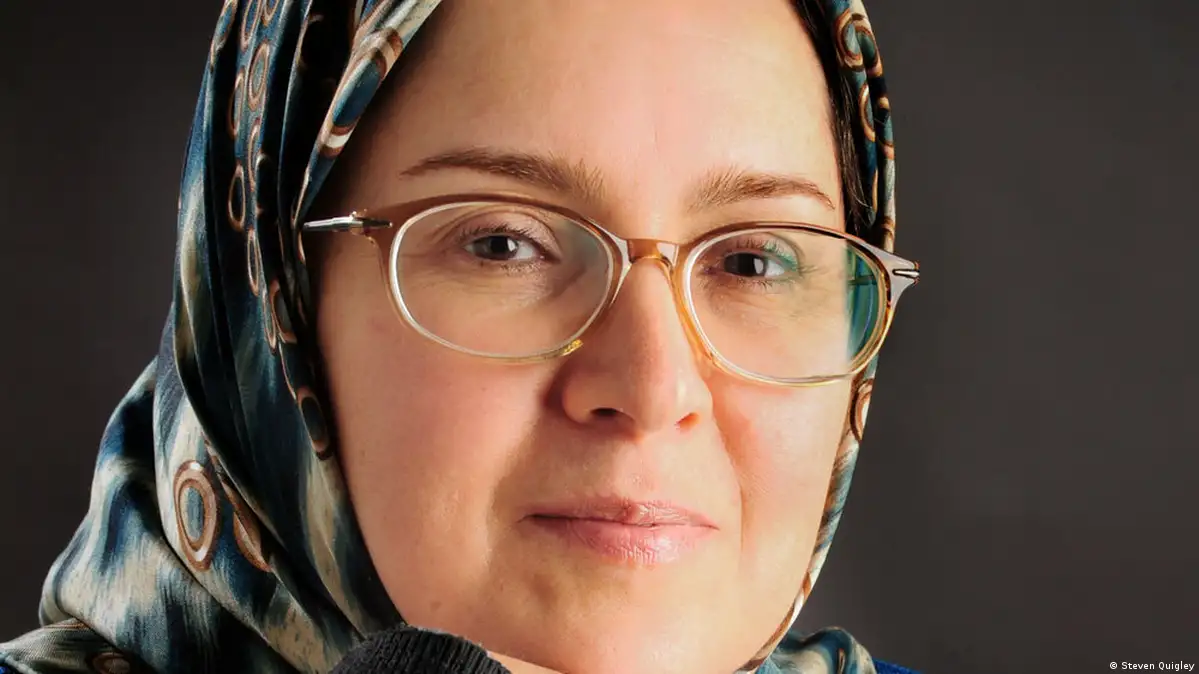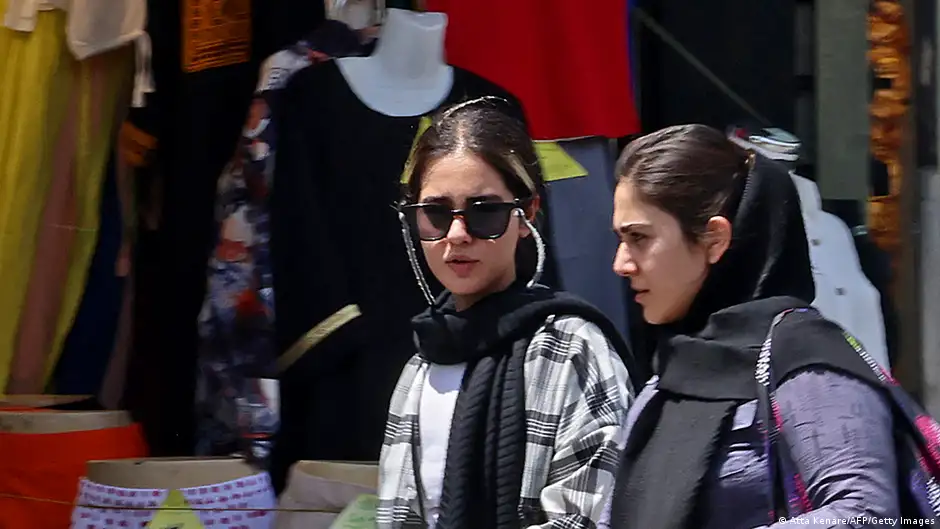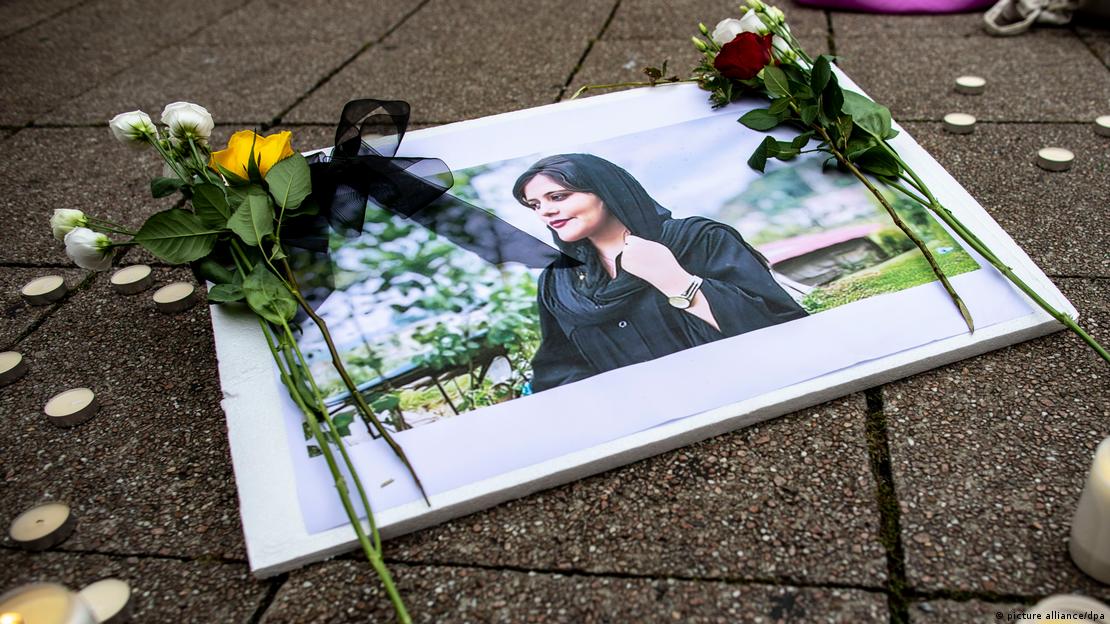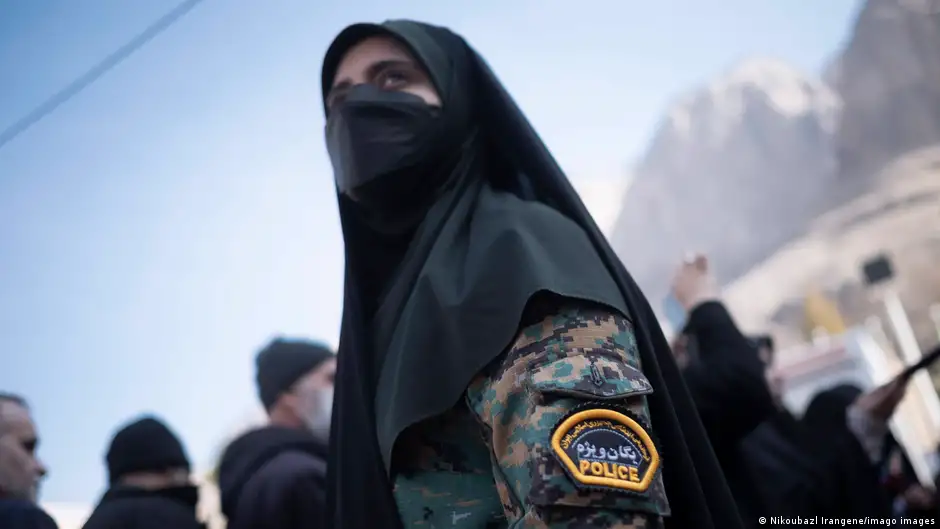A revolution in Islamic law

Is this woman really so dangerous? The scene of her arrest reveals a great deal about how the regime views her. It is 15 March 2024, shortly before sunrise. Four armed secret service agents stealthily gain access to the apartment where Sedigheh Vasmaghi lives – yet another surprise night-time police operation, a tried and tested method that has been used thousands of times over.
This time, the men, some of them masked, are accompanied by a female colleague, who is also armed. They have come to arrest a woman, a 61-year-old, nearly blind theologian. After the usual shouting, they handcuff their "object" and meticulously collect her personal belongings; one of the secret service agents also takes her walking stick.
There is no doubt about the threat posed by the arrested person. Sedigheh Vasmaghi is a very special symbol of resistance in Iran. She has challenged the system to its very core. With all that she does and how she does it, she has succeeded in earning a great deal of respect across many borders. And that is what makes her so dangerous.

She embodies the dawn of a new era
Sedigheh Vasmaghi's stirring biography harbours many stories. These are not just stories about the Islamic Republic or about the Supreme Religious Leader Ali Khamenei and his rise and fall. The career of this petite woman has been nothing less than epoch-making.
This is because what Vasmaghi is doing, and above all how she is doing it, represents a turning point in the history of Shiism. Generations of orientalists and Islamic scholars will have to study this woman and her theses if they want to write anything about "women in Islam". According to the internet portal Zeitoon, she has long since ushered in the end of the male-dominated jurisprudence that was conceived, decreed and often violently enforced by turban wearers for centuries. Vasmaghi is a phenomenon, the website says, and the history of the Shia clergy as we know it came to an end with her writings – in this sense, she could also be described as a once-in-a-millennium phenomenon.
Zeitoon is the website of those who are revolutionising Shia thinking. Theology professors and ayatollahs are among the site's regular contributors, as are many journalists who report on Iran, especially from Shia seminaries. "We have problems with the men" is the headline of the last interview Zeitoon conducted with Vasmaghi before her recent arrest.

Enthralled by the revolution
Sedigheh Vasmaghi had just graduated from secondary school when the Islamic Republic was born in 1979. Like many of her peers, she greeted the revolution with enthusiasm. At the time, she was still going about without a headscarf and wearing a miniskirt, as immortalised by pictures on the internet from this period. But she was so captivated by the revolution that, despite excellent grades, she chose not to go to university but rather to attend Shia women's seminaries.
Ayatollah Khomeini, founder of the "Republic", had repeatedly spoken out in favour of women's engagement in society – in a religious public sphere, of course. Even this was a major breach of taboo for many clergymen, but it served the new rulers so well that no one dared to object.
Vasmaghi stayed with the mullahs for three years and studied Islamic jurisprudence (fiqh). From the start, the woman who had been at the top of her class at school had a special standing at the Shia seminaries. Afterwards, she attended Tehran University, where she became not only an academic theologian but also an academic researcher. Her lectures were public events and there was almost always a stir when she published an article or expert opinion – and Vasmaghi publishes a great deal. She has been writing poems, short stories and novels since she was at secondary school. As an expert in Shia jurisprudence, she now also began publishing reference books on theological topics, mainly on women's rights.
These were the early years of the revolution, and many still hoped that the Islamic Republic could be reformed. At this time, Vasmaghi became involved in a nationwide reform movement that was striving for a political Islam with a human face. Mohammad Khatami, Iran's president from 1997 to 2005, became the symbolic figurehead of the movement. Sedigheh Vasmaghi was not only writing books at the time, she also became politically active. She was elected to the Tehran City Council and appointed its spokesperson.
This era witnessed a short, turbulent spring of freedom, which ended abruptly with the election of the populist Mahmoud Ahmadinejad as Iranian president in 2005. Today, ex-President Khatami is under a special sort of house arrest: he is not allowed to leave his home without permission, Iranian newspapers and websites are banned from publishing pictures of him, and not even his name is mentioned in official media.
When Ahmadinejad came up for re-election in 2009, the Islamic Republic experienced the greatest crisis in its history thus far. For months, hundreds of thousands protested against electoral fraud, numerous people were killed and injured, and on a single day, more than three million protesters gathered silently on the streets. It was all in vain. What became known as the Green Movement was brutally crushed, and presidential candidate Mir-Hossein Mousavi and his wife, Zahra Rahnavard, were placed under strict house arrest. To this day, they are not permitted to leave their home.

Productive years in exile
Living and working under Ahmadinejad became increasingly unbearable, even impossible, for Vasmaghi. Eventually, she managed to leave the country. She first worked as a visiting professor at the University of Göttingen in Germany before switching to the University of Uppsala in Sweden, where she taught for six years.
These years of exile were a fruitful period for her. Vasmaghi's distance from the Shia legal system took on new dimensions in her Swedish surroundings. This is where she published her standard study "Women, Jurisprudence, Islam" (2014) and the Swedish translation of one of her poetry collections. During her six years in Sweden, Vasmaghi also became a respected speaker for Iranian "feminists abroad".
The Islamic legal scholar began to speak in various European cities to Iranian women who had fled political Islam in their home country. All of them listened with rapt interest. Her six years in exile were true years of learning – both for herself and for her audience.
But Vasmaghi longed to return to the place where she felt completely at home – spiritually, politically and linguistically. "I spend so much time engaging with this piece of earth I'm standing on. But why? Can this earth not be my home? What is the difference? The equilibrium is different. There is no comparison with my home country. Here I feel like I'm floating on air," she writes in her book Prison or Exile (published in Farsi in 2020).
In search of inner equilibrium
She finally set out to find her inner equilibrium, returning to Tehran despite having been sentenced to five years in prison in absentia. Arriving at Tehran Airport in 2017, she was immediately presented with the verdict of the Islamic judiciary. Yet after being detained for several hours, she was let go. An instant arrest upon her arrival did not seem opportune; the tactics of the secret service agents are unfathomable.
A few days later, however, Sedigheh Vasmaghi was arrested and taken to Tehran's notorious Evin Prison. She was only released after many weeks, after paying extremely high bail.
But this freedom was only borrowed, temporary. New charges continued to be brought, and at some point the number of years in prison to which she has been sentenced amounted to 11 – potentially with many more to come.
Vasmaghi suffers from retinal dystrophy, a hereditary disease that leads to the progressive degeneration of the retina. Ophthalmologists have warned that the stress of prison life will soon make her completely blind. It recently became clear that Vasmaghi would have to be admitted to an eye clinic outside the prison walls. She couldn't go without a headscarf, but she refused to wear one. She has not worn a hijab since the murder of Mahsa Amini in September 2022 at the hands of the morality police, and since the start of the "Woman, Life, Freedom" protests. She will not even meet with her lawyer wearing a headscarf.
Nevertheless, she keeps writing open letters from her cell about the conditions inside and outside the prison walls. These letters are almost always addressed to Ali Khamenei, because Sedigheh Vasmaghi gives that man in the seat of power sole responsibility. And rightly so.
Translated from the German by Jennifer Taylor